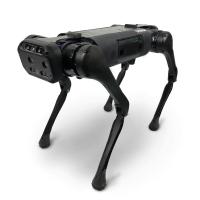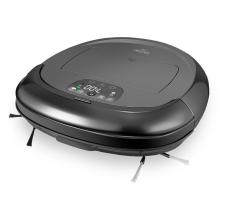In robotics there is a term used to describe the creepy aura that surrounds machines that look just a little too human for us to be comfortable around them. It’s called the “uncanny valley,” and you can see it perfectly illustrated in Robert Zemeckis’ motion capture movies and Honda robotics demonstrations.
The issue comes down to the accuracy of facial expressions that are just almost as articulate as our own, but lack the human intention behind them that we’ve come to know and trust over millennia of evolution. It follows that the key to making robots that don’t creep us out would be to take a page out of consumer robotics company Romotive and design robots with cartoonish expressions, or make like the Red Queen and get rid of their heads altogether.
It turns out that the head is a completely unnecessary appendage for robots, since they don’t need to spend precious body space that could otherwise be used for brain-having on food processing organs. Robotic sensors and communication channels don’t need to be limited to vulnerable openings close to their brains either, so the idea of building a robot with a head isn’t just creepy, it’s inefficient.
For example, take the “cheetah-cub” robot: the latest member of the growing biology-inspired machine army. It is roughly the size of a housecat and takes a queue from one when it comes to how it moves. On all fours, the quadrupedal beast-machine can move at speeds up to 1.4 meters per second, while maintaining cat-like balance.
The cheetah-cub-bot’s movement is extremely realistic looking, but it’s not aiming to be mistaken for your pet tabby – that is unless you’re a terrible caregiver. The cheetah-cub-bot, as you’ve no doubt surmised by now, has no head. It is unnecessary for the applications of this versatile computer cat, which will no doubt include surveying and rescue operations in areas with precarious terrain that would be laughably out of bounds for a wheel-based robot.
It’s not the only walking robot out there. Digging robots inspired by the behavior of fire ants will be applied to similar terrain, and a full-sized cheetah robot already exists that can outrun Usain Bolt, our No. 1 draft pick for the Human versus Robot Olympics (he’s very fast). You can bet that none of these robots have heads getting in the way of their programmed jobs.
It should be noted that the fact that these robots are headless doesn’t make them any less terrifying than that sounds, but it does plant them firmly on one side of the uncanny valley: the other side, the one we aren’t on because we, the head-having, emotion-experiencing creators of these decapitated servants, don’t want to be imitated. It makes one wonder, exactly what do we plan to achieve with robots designed in our own efficient image?





